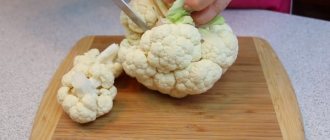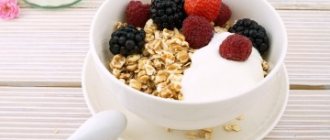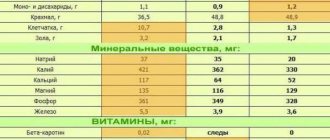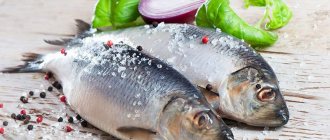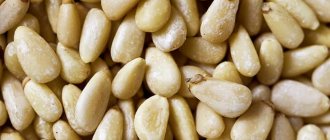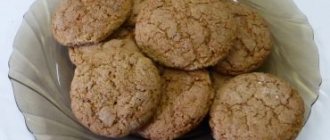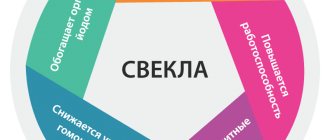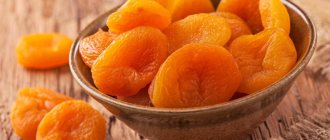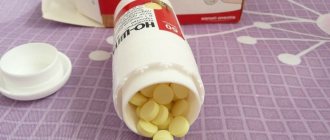Millet is a purified millet grain that is rich in amino acids and fiber, vitamins and minerals. The big advantage of this cereal is that it rarely causes allergies. Therefore, millet porridge during breastfeeding is healthy and safe for mother and baby. This dish is not only possible, but also should be consumed during lactation. In addition, pediatricians recommend giving millet to infants as complementary foods after one year.
Types, chemical composition and properties
There are several types of millet, which are obtained using different millet processing methods:
- Dranets. It has a grayish color, contains a large amount of valuable microelements, and can taste bitter due to the fat content. Dranets is recommended to be used for making a side dish. To get rid of the natural bitter taste, you should thoroughly rinse the cereal before cooking.
- Polished grain. It has a rough surface and bright color. This type of cereal produces a viscous or crumbly dish, depending on the duration of cooking.
- Crushed. It is obtained by intensively grinding millet. This type of millet retains the least amount of valuable compounds and boils quickly.
Nutritional value of the product (per 100 g of dry cereal):
- 12 g proteins;
- 69.3 g carbohydrates;
- 2.9 g fat.
- 334 kcal.

Millet is a storehouse of useful microelements and contains complex carbohydrates, which are a source of energy. This cereal is necessary for the restoration of the female body after childbirth and the full development of the baby.
Chemical composition of millet and its properties:
| Name of valuable microelement | Main action |
| Vitamin B1 | Ensuring the full development and growth of the child, stabilizing cardiac activity, normalizing the functioning of the central nervous system and gastrointestinal tract. |
| B2 | Active participation in blood formation processes, improvement of visual function. |
| B5 | Activation of metabolism, normalization of the central nervous system, gastrointestinal tract, adrenal glands, stabilization of hormonal levels, stimulation of brain activity, increasing the protective qualities of the body. |
| PP | Formation and strengthening of immunity, ensuring metabolic processes. |
| Calcium (Ca) | Improving blood clotting, the structure of nail plates, teeth, hair, skin, stabilizing the functioning of the central nervous and cardiovascular systems. |
| Fluorine (F) | Formation and strengthening of bone tissue, teeth and their enamel, immune system, improvement of hematopoiesis. |
| Iron (Fe) | Ensuring blood formation, preventing anemia, improving the functioning of the thyroid gland, central nervous system, brain, maintaining immunity. |
| Silicon (Si) | Improvement of skin structure, formation and strengthening of bones and cartilage. |
| Copper (Cu) | Improving the digestibility of Fe (iron), normalizing the functioning of the immune and digestive systems, stopping inflammatory processes. |
| Magnesium (Mg) | Stabilization of cardiac activity, positive effect on bones and teeth. |
| Potassium (K) | Elimination of allergic manifestations, stabilization of the gastrointestinal tract, kidneys, cardiovascular system. |
| Zinc (Zn) | Ensuring the growth of bones and muscles, improving the appearance of the skin, increasing the immune properties of the body. |
| Manganese (Mn) | Stabilization of the central nervous system, formation, strengthening of bones, increasing the protective properties of the body, prevention of osteoporosis, neuroses. |
| Cellulose | Normalization of the functioning of the gastrointestinal tract, due to stimulation of intestinal peristalsis, prevention of stool disorders, flatulence, removal of toxic elements from the body. |
| Polyunsaturated fatty acids | Lowering cholesterol levels, improving the structure of skin and hair. |
Which millet is better to choose
In order not to harm yourself and your child, you need to choose the highest grade cereal. Signs of its quality are its bright yellow color and valid expiration date.
Good cereals lack:
- foreign odors;
- impurities of dust and dirt;
- glossy shine.
The grains should be matte and whole, and the shelf life should be no more than 9 months.
There are three types of millet you can find in stores and markets:
- Polished . The best option for nursing mothers, since the grains are cleared of germs and shells, which ensures easy digestibility.
- "Drag " Cleared of flower film, retains more nutrients, but is more difficult to digest.
- Crushed . Crushed wheat grains intended for the preparation of semi-liquid porridges.
All types are suitable for consumption during lactation, but it is worth considering that millet has a bitter taste.
Is it possible to have millet porridge while breastfeeding?
Many mothers are interested in whether it is possible to eat millet porridge while breastfeeding? After all, the baby’s health directly depends on the mother’s diet. After the birth of a child, the female body needs B vitamins, calcium (Ca), iron (Fe) and other trace elements. The lack of vitamins and minerals negatively affects the appearance - hair loss, drying of the skin, and separation of the nail plates. Cereals are a source of valuable compounds.
Answering the question whether a nursing mother of a newborn can eat millet porridge, it should be noted that the introduction of this product is permissible in the absence of individual intolerance to cereals. Pediatricians allow you to eat a dish cooked in water with the addition of a small piece of butter already in the first weeks of lactation. To preserve the maximum amount of beneficial qualities, it is recommended to soak millet in non-hot water for several hours (preferably overnight). This cooking method will help get rid of the natural bitter taste.

When a dish should not be eaten
Despite the many benefits, sometimes “golden porridge” can cause harm to the body. This happens in the following cases:
- With a tendency to increased gas formation. An abundance of fiber will only worsen the situation.
- For certain diseases of the thyroid gland, in particular hypothyroidism (a disease resulting from a lack of certain hormones). This is due to the fact that, according to some studies, eating millet porridge interferes with the absorption of iodine, which is responsible for the health of the thyroid gland.
- For those who suffer from low stomach acidity.
- Having inflammatory processes in the large intestine.
- In case of individual intolerance.
Since millet porridge may slow down the absorption of iodine by the body, it should be consumed separately from iodine-containing products.
But it’s better not to feed your husband millet more than three times a week. Frequent use of the product by men negatively affects their potency.
Eating millet porridge during lactation
Many women wonder whether a nursing mother can eat millet porridge during the first month of breastfeeding? This dish is considered low-allergenic, therefore it is allowed to be introduced from the beginning of lactation. Doctors recommend that a nursing mother eat millet porridge to saturate the body with vitamins and minerals necessary for its restoration.
Rules for eating millet porridge in the first 2 - 3 months after childbirth
Cow protein is highly allergenic and can penetrate into mother's milk and then into the baby's body. Therefore, breastfeeding women should not introduce whole milk-based products in the first months after giving birth. In this case, millet should be cooked on a water basis; it is allowed to add a small amount of butter to the finished dish.
When answering the question whether it is possible to eat millet while breastfeeding from the first months of lactation, it should be noted that the cereal does not contain plant protein (gluten), which often provokes undesirable reactions. However, children may suffer from hypersensitivity to this product. Therefore, it is recommended to start introducing millet-based dishes with a small portion (a few spoons) in the morning. After this, you need to observe possible changes in the baby’s well-being or behavior throughout the entire day and the next two to three.
If the baby tolerated the introduction of unfamiliar food well, then the mother can continue to eat millet porridge during breastfeeding, gradually increasing the portion. It is allowed to add dried fruits, vegetables, fruit pieces to a dairy-free dish, provided that these products are first introduced into the menu and there is no negative reaction in the baby. It is necessary to take two- or three-day breaks between eating unfamiliar foods. Then the mother can be sure which food she is allergic to (if any).
If indigestion or itchy skin rashes appear on the child’s body after the introduction of millet, you need to stop consuming the dish. You can try again after 2–3 months. This time is enough for the child’s body to adapt to new environmental conditions and to form the digestive system.
Millet porridge in the diet, nutritionist recommendations
During breastfeeding, the energy consumption of a nursing mother increases by 550 kcal. Long walks with a child require another 350 kcal. Based on these data, we can conclude that the belief about the need to eat for two during lactation is incorrect. Porridge made from millet cereals promotes the penetration of carbohydrates into the body, the excessive consumption of which accumulates in the subcutaneous fat space.
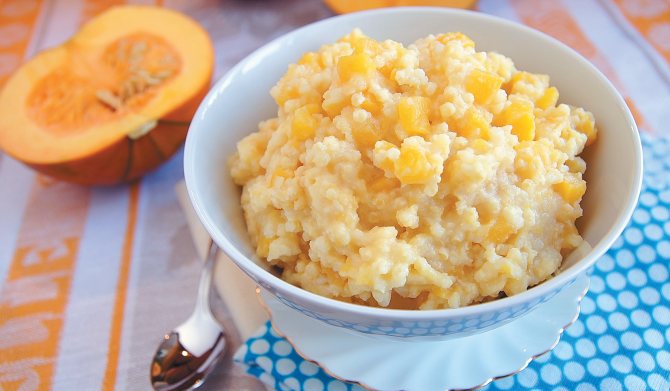
To stabilize body weight, nutritionists advise a woman who has recently given birth to eat millet in the first half of the day. Consumption of dairy dishes helps activate metabolism, saturate the body with energy and valuable microelements. To improve the functioning of the digestive tract, it is recommended to add dried apricots and plums. Friable millet porridge, cooked on a water base, with the addition of vegetables can be used as a side dish.
Harm
Attention! For mother and baby, the harm of millet porridge is that the protein has a fairly low value, and porridge in the form of cereals is very difficult to digest and difficult to prepare. It must be thoroughly washed and cooked for a long time to avoid a bitter aftertaste.
A contraindication to eating millet porridge is if the mother has stomach diseases associated with low acidity, as well as problems with the thyroid gland. With moderate consumption and proper preparation of the product, millet will not harm health. This is a universal product that can be useful to everyone, regardless of age and gender.
Possible side effects of millet porridge for mother and child
Breastfeeding women often suffer from intolerance to foods consumed by a nursing woman. Below are the side effects that can occur after a mother eats millet during lactation.
Allergy
Millet porridge is considered a low-allergenic dish. Nursing mothers can safely eat it in the first months of breastfeeding. However, it is worth starting the introduction of the product with a small portion. To avoid side effects during breastfeeding, you should eat porridge cooked in water. Milk is a highly allergenic drink; it can cause a negative reaction in a child’s body.
Important! It is not recommended to introduce millet dishes into the diet if the infant is hypersensitive to this product.
Colic
In case of millet intolerance, the baby may experience colic and discomfort in the tummy after introducing dairy-free porridge into the mother's diet. If such a symptom appears, you need to reduce the portion or give up millet for a while.

It should be borne in mind that children under 4 months of age often suffer from this problem. This condition is considered a normal physiological phenomenon. This is due to the insufficiently strong digestive tract of the baby.
At what age can it be given to a child?
Wheat should be introduced into an infant's diet only after he has started eating other types, such as rice, buckwheat and oatmeal. This cereal can be offered only after the child reaches the age of 8–10 months. It is not recommended to administer it before this period, since it can provoke an allergic reaction.
Did you know? Wheat is one of the oldest grains used by man. Its grains were found in the Egyptian pyramids, and porridge from this cereal is mentioned in the Bible.
Pediatricians have developed an optimal scheme for introducing wheat porridge into the infant’s diet. It consists of the following steps:
- The first sample should be no more than half a teaspoon. Moreover, it is necessary to monitor the child’s condition after taking the porridge. This is done in order to determine the reaction to the introduced new product.
- Preference should be given to morning feeding.
- It is strictly forbidden to introduce it simultaneously with other new products. Over a period of approximately 2 weeks, parents must fully determine the digestibility of this cereal by the child’s body. And only after this period can you try to introduce a new dish into the baby’s diet.
- Porridge should be consumed in its pure form, namely without the addition of sweeteners, salt, or spices. Also, cereals should be cooked in water, not milk.
- To begin familiarizing the child's body with a new product, a liquid consistency is suitable. The volume of cereal should be increased gradually.
It is recommended to cook with milk for children over 1 year of age. You can also add various fruits and berries.
Delicious recipes for a nursing mother
Below are options for preparing millet that are acceptable for use during breastfeeding. Cooking time depends on the method of processing the cereal before it is delivered to stores for sale.
Millet porridge on water
Required components:
- one and a half tbsp. water;
- 0.5 tbsp. millet;
- salt, granulated sugar, butter (to taste).
Actions:
- First, you need to rinse the cereal well, then pour boiling water over the millet and leave for a couple of minutes.
- Then place the resulting mass in boiling water, add salt and sweeten to taste.
- Cook in a sealed container for 15 minutes. with minimal heat.
- After time, add a piece of butter, leave the porridge for a while, cover with a lid.
The finished dish needs to be mixed.
Milk millet porridge
Ingredients:
- 1 tbsp. water;
- 0.5 tbsp. millet cereals and milk;
- sugar, butter, table salt (to taste).
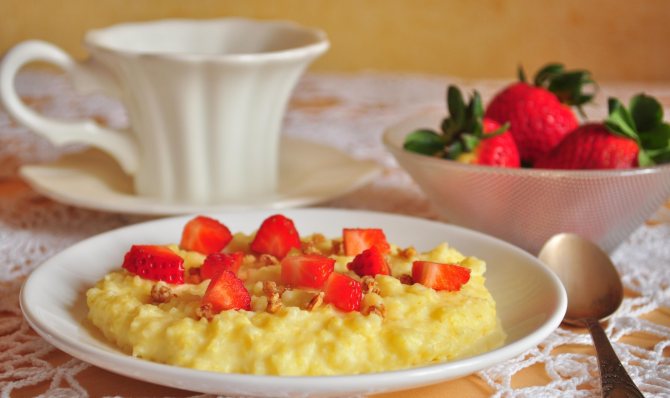
Manufacturing steps:
- First you need to thoroughly rinse the millet until the liquid becomes clear.
- Pour boiling water over the cereal, wait 2 minutes, transfer the mixture to boiling water.
- Cook for about 5 minutes. in a sealed container.
- After time, pour in milk, sweeten, add salt (to taste), and mix the ingredients.
- Cook until tender (another 10 minutes)
After a specified amount of time, add butter and stir.
Beneficial features
Millet contains useful minerals such as calcium and iron, phosphorus and potassium, magnesium and zinc. The grain contains B vitamins, vitamins A and C, PP and E. Millet cereal is low in calories, so it can easily fit into the diet menu. So, 100 grams of porridge with water contains only 87 calories, and with milk – about 200.

Millet porridge performs the following useful functions:
- Improves digestion and helps with constipation;
- Cleanses the body, removes waste, toxins and excess fat;
- Stabilizes the functioning of the heart and blood vessels;
- Improves hematopoiesis;
- Strengthens the immune system and helps fight viral diseases;
- Stimulates brain function and improves memory;
- Tightens pores, cleanses and rejuvenates the skin;
- Maintains the necessary energy and improves material metabolism;
- Promotes weight loss;
- Relieves fatigue and improves mood;
- Restores physical strength and emotional background, which is very important for a woman during the postpartum period;
- Ensures the full growth and development of the child;
- Strengthens teeth, participates in the formation of bone tissue.

Millet is considered a hypoallergenic grain, easily digestible and digested in the body. Therefore, millet can be eaten while breastfeeding without the risk of harming the baby. This dish prevents fat from accumulating in the body and ensures normal metabolism, which has a positive effect on a woman’s well-being and leads to weight loss. However, you should follow some nutritional recommendations for a nursing mother.
How is millet useful for pregnant and lactating women?
Millet is a storehouse of substances that are very useful for the human body, including vitamins, micro and macroelements that are needed for a complete and healthy diet for mother and child.
It contains vitamins such as: B1, B2, B5, A, E, PP. In addition, fiber of two types, amino acids, folic acid, complex carbohydrates, proteins - this is not a complete list of all the useful substances that a person can get from an ordinary plate of millet porridge.
For pregnant women, such food is often a real salvation during toxicosis, as it cleanses them well of toxins, antibiotics and other poorly excreted substances. Porridge improves the functioning of the gastrointestinal tract at different levels, speeds up intestinal motility, activates and normalizes the beneficial microflora of the stomach and the entire gastrointestinal tract, which is very important during pregnancy, as well as immediately after childbirth.
To feel the healing, therapeutic effect, you need to eat about 100 grams of millet porridge daily.
